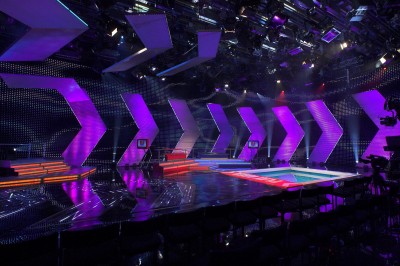By Stephen Montgomery
Light-emitting diodes (LEDs) are being used in an ever-broader array of illuminated signs and professional display applications today—and this market trend is forecast to continue in the future. LEDs are used in stationary signs, vehicle-mounted displays (e.g. in taxis and mass-transit systems), outdoor video screens, building façades, digital billboards, stadium scoreboards, small indoor retail displays, channel letters, lightboxes, backlit digital signage and food-service displays in restaurants and supermarkets. The list continues to grow.
In fact, based on evaluations by engineers and product planners, early ideas and concepts already exist that will only become actual products about three to seven years from now. Once confidence exists that these ideas and concepts will indeed yield new products, their use can be anticipated and forecast as part of the overall LED market.
Looking several years ahead, of course, many future products may not even be at the idea stage. So, when predicting growth in the demand for innovative signage, based on LEDs with improved capabilities and capacities, the forecast is most likely to change over time, both as innovative concepts enter the market and as what were once considered ‘sure bet’ products flop.
In any case, the automation of the manufacturing, assembling and testing of solid-state lighting products has enabled the mass production of LEDs. As a result of production efficiencies, yield improvements aided by quality controls, greater market and technology competition and improvements in sales, marketing and distribution, among other factors, the average prices of LEDs will be driven lower over the next few years.
Further, while both LED technology and processing are still improving, it is common knowledge today that signmakers and other users can save on energy costs substantially by choosing to build LED-based signs or by upgrading existing neon or incandescent signs with LED retrofits.
Being energy-efficient, it is worth mentioning, LEDs help reduce carbon dioxide (CO2) emissions associated with the consumption of electricity. This is a significant concern in Canada, which produces only two per cent of the world’s energy-related CO2 emissions, but is one of the highest emitters on a per capita basis.

LEDs are being used in ultra-high-contrast digital billboards, such as Vornado Realty Trust’s three-panel display at Manhattan’s Penn Plaza. Photo courtesy Barco
Packaged growth
The ‘food chain’ of LEDs may be expressed through the following four levels:
- The chip or die.
- The packaged LED (i.e. component-level bulb)
- The LED array or module.
- The LED-based sign or display system.
Among packaged LEDs, there are standard types versus high-brightness (HB) LEDs used in signage and professional displays. Standard LEDs are rated at less than 30 lumens per watt (lm/W), while HB LEDs include all component-level bulbs rated at 30 lm/W or higher. Some of the latter are categorized as ultra-high-brightness (UHB) LEDs, rated higher than 70 lm/W.
The worldwide consumption of packaged LEDs for use in signage and professional displays was expected to reach approximately $1.68 billion in 2012 (see Figure 1), up from $1.5 billion in 2010 and $1.63 billion in 2011 (this data is not cumulative; it refers to use within each particular calendar year). This level of consumption is forecast to almost double in 2017, reaching nearly $3.3 billion.
(While LEDs are now used to backlight consumer-level liquid crystal displays (LCDs) for computers and TVs, the LED-based screens used exclusively for professional purposes are separately quantified for the signage and professional display category.)






